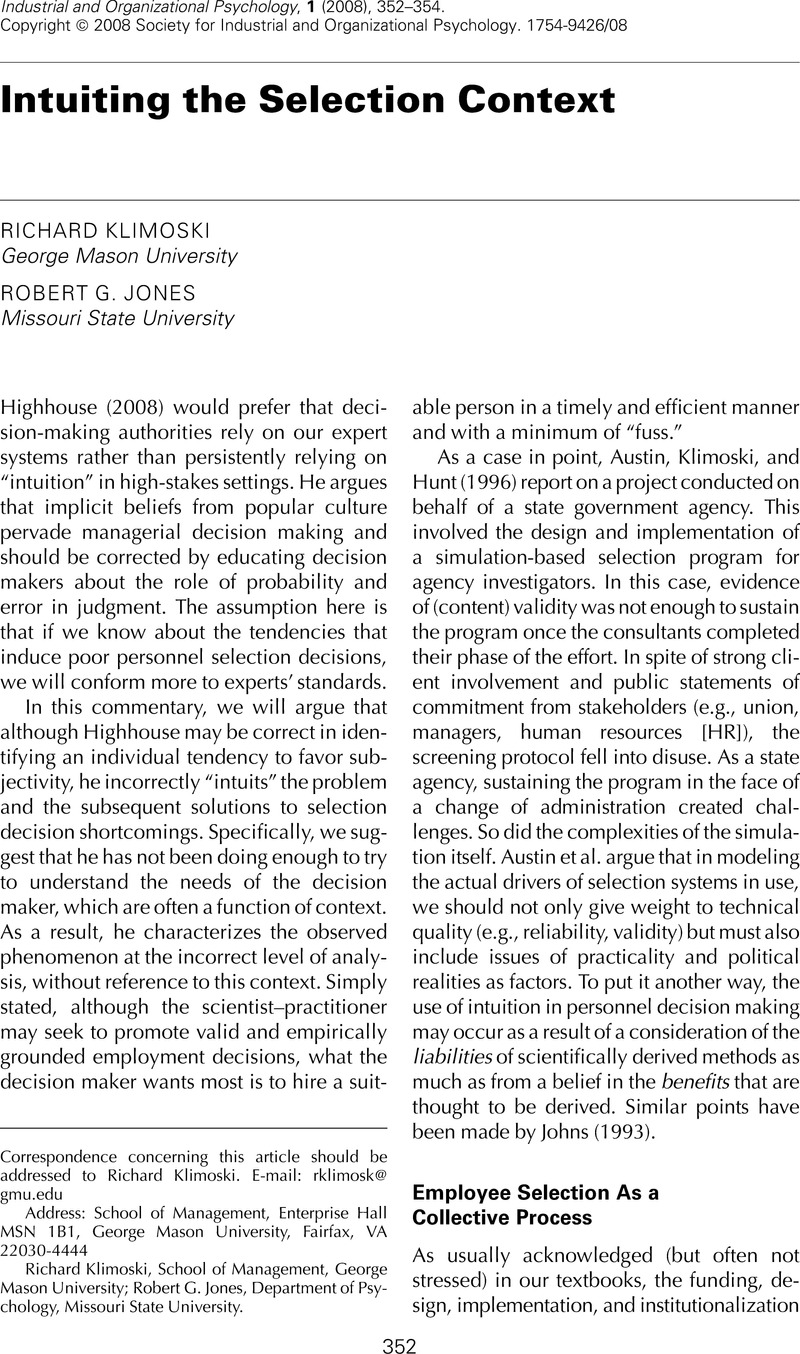Crossref Citations
This article has been cited by the following publications. This list is generated based on data provided by Crossref.
Highhouse, Scott
2008.
Facts Are Stubborn Things.
Industrial and Organizational Psychology,
Vol. 1,
Issue. 3,
p.
373.
Klehe, Ute-Christine
2011.
Scientific Principles Versus Practical Realities: Insights From Organizational Theory to Individual Psychological Assessment.
Industrial and Organizational Psychology,
Vol. 4,
Issue. 3,
p.
311.
Lodato, Michael A.
Highhouse, Scott
and
Brooks, Margaret E.
2011.
Predicting professional preferences for intuition‐based hiring.
Journal of Managerial Psychology,
Vol. 26,
Issue. 5,
p.
352.
Miles, Andrew
and
Sadler-Smith, Eugene
2014.
“With recruitment I always feel I need to listen to my gut”: the role of intuition in employee selection.
Personnel Review,
Vol. 43,
Issue. 4,
p.
606.
Kausel, Edgar E.
Culbertson, Satoris S.
and
Madrid, Hector P.
2016.
Overconfidence in personnel selection: When and why unstructured interview information can hurt hiring decisions.
Organizational Behavior and Human Decision Processes,
Vol. 137,
Issue. ,
p.
27.
Burton, Jason W.
Stein, Mari‐Klara
and
Jensen, Tina Blegind
2020.
A systematic review of algorithm aversion in augmented decision making.
Journal of Behavioral Decision Making,
Vol. 33,
Issue. 2,
p.
220.
Burton, Jason W.
Stein, Mari-Klara
and
Jensen, Tina Blegind
2023.
Judgment in Predictive Analytics.
Vol. 343,
Issue. ,
p.
3.



